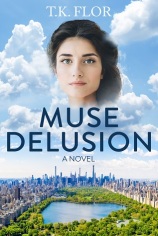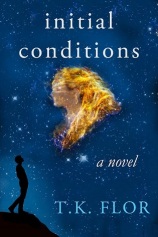“phenomena of nature resemble the scattered leaves of the Sibylline prophecies; a word only, or a single syllable, is written on each leaf, which, when separately considered, conveys no instruction to the mind; but when, by the labor of patient investigation, every fragment is replaced in its appropriate connection, the whole begins at once to speak a perspicuous and harmonious language.”
Thomas Young, Introduction to A Course of Lectures on Natural Philosophy and Mechanical Arts, 1807
(cited from The Last Man Who Knew Everything, by Andrew Robinson.)
 Thomas Young (1773 – 1829) sought these clues throughout his life. A child prodigy with interest in classics and mathematics, he was, according to Wikipedia, a British polymath who made notable contributions to the fields of physics, physiology and Egyptology. As Young himself attested, these discoveries did not happen randomly, nor were they results of some “lucky guess.” In The Last Man Who Knew Everything, Young’s biographer pieces together how Young’s scientific ideas were developed, communicated and treated by his contemporaries, by later scientists and by biographers.
Thomas Young (1773 – 1829) sought these clues throughout his life. A child prodigy with interest in classics and mathematics, he was, according to Wikipedia, a British polymath who made notable contributions to the fields of physics, physiology and Egyptology. As Young himself attested, these discoveries did not happen randomly, nor were they results of some “lucky guess.” In The Last Man Who Knew Everything, Young’s biographer pieces together how Young’s scientific ideas were developed, communicated and treated by his contemporaries, by later scientists and by biographers.
Young’s knowledge spanned many subjects (he contributed over sixty articles to Encyclopedia Britannica on topics as different as “Bridge”, “Egypt”, “Tides”, “Chromatics”, and “Languages”), yet his formal education was in medicine. According to Young himself (writing in the third person)
“His pursuits, diversified as they were, had all originated in the first instance from the study of physic: the eye and the ear led him to the consideration of sound and of light.”
A considerable part of the biography is devoted to Young’s contribution to “the theory of light and colors” which Young himself considered “to be of more importance than all I have ever done, or ever shall do besides.” For me, the most interesting part was how he came up with the famous double-slit experiment. More about the experiment can be seen here:
In his book Natural Philosophy, Young described the experiment and the interference pattern he observed, but did not supply any numerical data about the interference fringes. In the biography The Last Man Who Knew Everything, Robinson raises the question whether Young actually performed the experiment or based his discovery on a “thought” experiment. The arguments Robinson cites are interesting, and not limited to physics. According to Robinson: “And if his results were as conclusive as he described, one would have expected him to report them more predominantly than he did by burying them in the middle of a huge mass of other work. But then perhaps he could not face further skepticism and even hostile attacks on his theory. We should also recall that he now wanted to stay out of the limelight and concentrate on becoming a physician.”
Regardless of how Young made his discovery, he was the first to come up with the double-slit experiment, early in the nineteenth century. It took a while for Young’s wave theory to replace Newton’s corpuscular (particle) theory, but in the twentieth century, physicists learned that neither Young nor Newton were completely right (nor wrong) about the nature of light. Richard Feynman called the double-slit experiment the “heart of quantum mechanics.” If you want to get a glimpse how complicated the physics really is, watch this:
As this blog post indicates, I have read The Last Man Who Knew Everything with considerable interest. The writing is often dry, and the biographer shies away from gossip (for example, he offers only broad hints about matrimonial problems in Young’s childless marriage), but the book provides plenty of background about the era which gives context to Young’s career and helps the reader better understand the choices Young made in his scientific pursuits.




That was a fun way to start my day. Wave physics was always a favorite topic for me to teach.
Thank you.
LikeLiked by 1 person